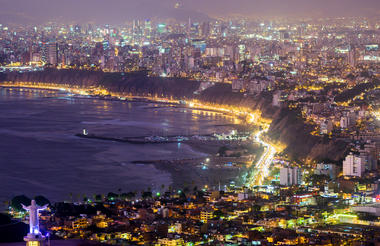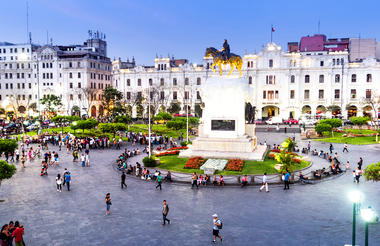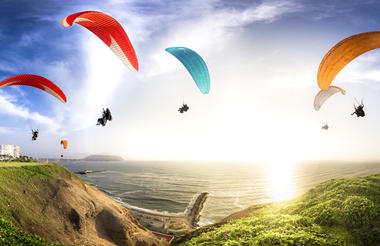A dynamic coastal neighbourhood synonymous with leisure, luxury and nightlife, Copacabana is characterised by million-dollar penthouses, stunning neoclassical buildings and tiny apartments set against a magnificent backdrop of jungle-clad mountains in Rio de Janeiro. From its humble origins as a small fishing village, the "Princess of the Sea" is now a leisure seeker's paradise, bursting with restaurants, nightclubs, bars and hotels, and emits a lively, effervescent energy, perfect for the social traveller. To learn its history, visit Forte de Copacabana, a fort and museum that traces the early days of the Portuguese colony through to the mid-19th century. Art enthusiasts will appreciate a visit to The Eva Klabin Foundation (Casa Museu Eva Klabin), a historical home of famous art and antique collector Eva Klabin that houses over 1000 art pieces from all over the world. A visit to Copacabana is incomplete without the world-famous Copacabana Beach, a 4-kilometre stretch of golden sand dotted with brightly-coloured umbrellas, bars and a popular playground for watersports, football, volleyball, or simply lazing in the sun.
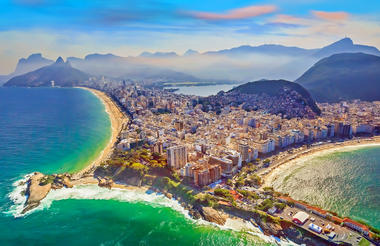
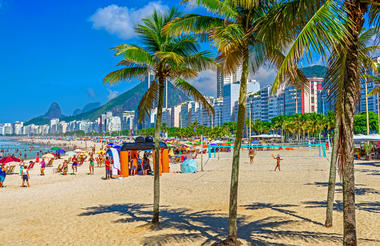
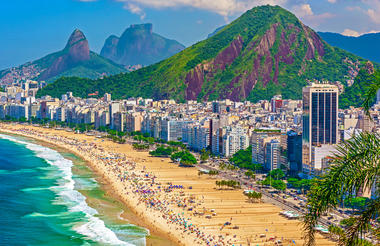
This magnificent waterfall marks the confluence of the Iguazu River in Argentina and the Parana River in Brazil, and the meeting of the two countries is marked by stone pillars rising from the water. It is said that the former first lady of America, Eleanor Roosevelt, exclaimed her ‘pity’ for her country’s Niagara Falls when she first encountered the beauty of Iguazu Falls. Roughly half the combined volume of both rivers thunders into the Devil’s Throat, a U-shaped cataract that delivers a torrential deluge of water into the wide basin below. Visitors can look forward to ample opportunities for excellent jet boat safaris, kayaking, hiking, biking, and more. Make sure to visit the extraordinary Iguassu Bird Park to see toucans and other brightly coloured exotic birds in their natural habitat.



Situated on Argentina’s stunning Rio de la Plata coast, Buenos Aires is a thriving portside capital defined by a rich history, vibrant culture, and strong European influence - thus nicknamed the Paris of South America. Countless museums covering a cornucopia of subjects; an active theatre culture; carnivorous buffets second to none; sensuous tango performances; a mosaic of architecture; and shops to fit all fancies – all these facets and more make up the seductive blend that is Buenos Aires. Some of the city’s highlights include the buzz of the La Bombonera Stadium; tango and milonga venues like the Bohemian La Catedral; and heritage architecture such as that at the Cementerio de la Recoleta, where visitors can wander through a ‘city’ of massive statues and marble mausoleums. Don’t miss the International Festival of Independent Cinema and the vibrant annual Pride Parade.
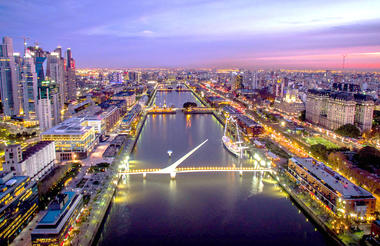
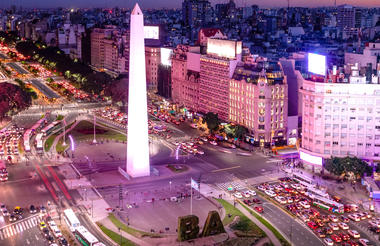
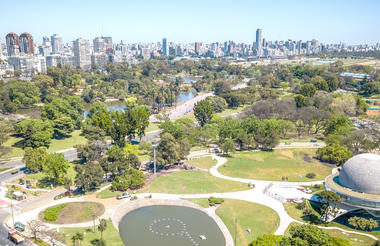
Surrounded by the peaks of the Andean Plateau and overlooked by the 6402m Mt. Illimani, La Paz is a truly breathtaking city whose buildings sprawl across the surrounding canyon, reaching altitudes of up to 4100m. While the sight of the city is reason enough to visit, La Paz holds a number of attractions sure to keep tourists fascinated. Take a walk along Calle Jaen, a colonial street lined with museums, explore the city's cathedrals or wander through some of the colourful markets, including the 'Witches' Market' where llama foetuses and dried frogs can be found for sale.



Set on the shores of glistening Lake Titicaca, on the Altiplano of Peru, this large city is dubbed the ‘folklore capital' of the country, well known for its traditional music and dance. It is also famous for its incredible collection of floating islands - man-made islands created from reeds, which exhibit the unique survivalist culture that has been alive here since pre-Incan times. Other highlights include visits to the atmospheric, historical Church of San Pedro, the gorgeous Sistine Chapel of the Americas, and a stroll along the boardwalk on the shoreline of Lake Titicaca. Active types should take on the challenge to climb up the 700 steps to the Kuntur Wasi viewpoint, which is presided over by a massive metal condor sculpture, for the reward of breathtaking vistas across the city and Lake Titicaca beyond.



Huayllabamba is located in the province of Urubamba, in the Cusco region of southern in Peru. Situated 15 minutes away from Urubamba, the town is well known for the quality and size of the corn from the fields. Huayllabamba celebrates the virgin Natividad or Mamacha Natacha every September 7th, with dancers and processions. The popular festivity features lots of color, dance, music and food.



Perched high up in the Andes, Machu Picchu Pueblo is a riverside town known for its proximity to the famous Machu Picchu ruins. This cloud-forest town is encircled by towering forested cliffs and boasts an endless array of hotels, restaurants, markets and labyrinthine streets. Machu Picchu Pueblo, also known as Aguas Calientes, serves as an excellent base to explore the renowned ancient archaeological site of Machu Picchu. Visitors can enjoy various other activities, including having a relaxing massage after a long day of exploring, taking a stroll through lush rainforest to the Mandor Waterfalls, embarking on an adventurous hike up the Putucusi Mountain or soaking in the relaxing thermal baths with the Andes as your backdrop. Don’t miss the Machu Picchu Museum and Botanical Gardens, displaying the area’s history and diversity of indigenous flora.
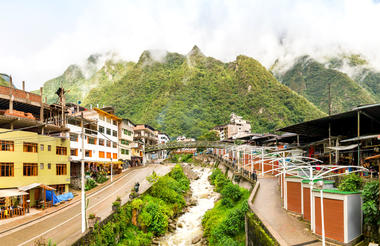
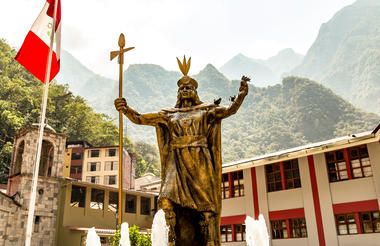
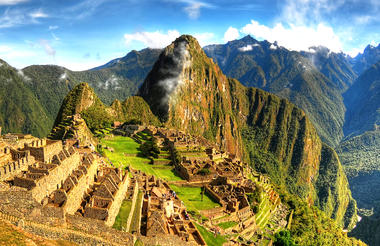
Once called the ‘Navel of the World’ by the Incas, Cusco rises in the southern Andes of Peru, where colonial grandeur meets the enduring stonework of the Inca Empire. A UNESCO World Heritage Site, it serves as the main gateway to Machu Picchu, the Sacred Valley, and surrounding ruins. At its centre, the Plaza de Armas—once Huacaypata—remains alive with cafés, arcades, and the 16th-century Cusco Cathedral, built from Sacsayhuamán’s stones. Nearby, the San Blas district unfolds with whitewashed adobe houses, blue balconies, and workshops where artisans craft metalwork, woodcarvings, and sacred art. Across the city, layers of history reveal themselves in landmarks such as the Korikancha, the Inca street of Hatun Rumiyoc with its twelve-angled stone, the Museum of Colonial Art, and the ancient shrines and water temples scattered through the surrounding hills.
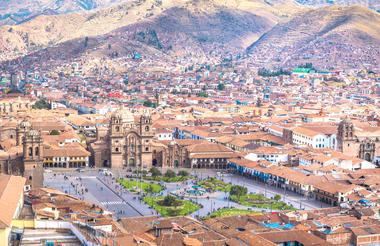
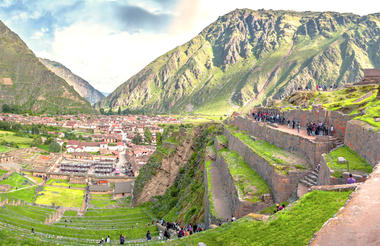
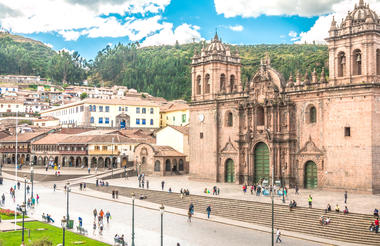
Peru’s capital is a fantastic city to tour, dotted with a multitude of cultural sites and beautifully preserved architecture. Founded by the conquistador Francisco Pizarro in 1535, Lima was first named ‘City of Kings’ – a biblical reference to the ‘Three Wise Men of the East’ – before its name was changed by the Spanish colonialists. The most significant historical buildings are located around the Plaza Mayor, the most notable being the Government Palace, where one can still observe the changing of the guard performed by the Húsares de Junín. The beautiful Cathedral and the various small palaces and colonial balconies also play also their part in the beauty of the city. Another highlight is the famed Larco Herrera Museum, documenting the millennial cultures that preceded the Inca civilization and containing a priceless collection of pre-Columbian artifacts, including some of South America's finest pre-Inca erotic pottery.
